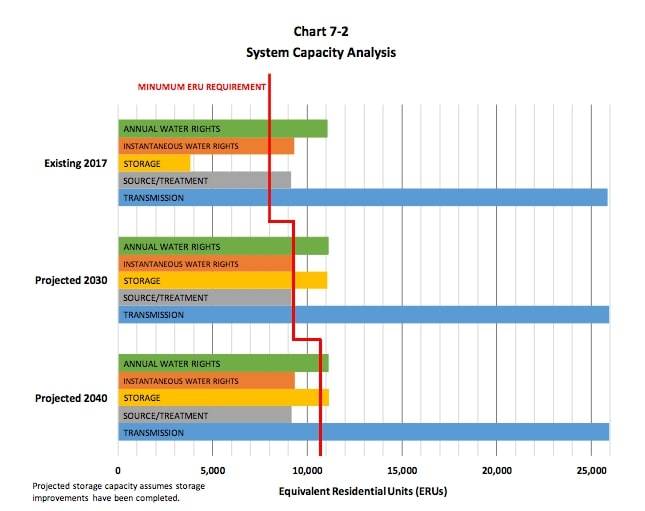The City of Snoqualmie will need to make several capital improvements to meet growing water demands over the next two decades.
This is according to the city’s draft Water Systems Plan (WSP), which was presented to the city council on July 26 by engineering company RH2.
“The main takeaway is, over the 20-year planning period, the city needs to look at physical improvement of [water] sources and additional water rights,” said Zach Schrempp, a project engineer with RH2.
A Water Systems Plan is required to be submitted to the state’s Department of Health every 10 years. The city’s last WSP was prepared in 2013. The 2021 update comes to evaluate existing and future water demand for the city until 2040.
As part of the plan, an efficiency use program will be introduced. The program has two stated goals: to reduce the maximum and average day demand of water use, and to maintain the city’s water system for drain leakage.
Average day demand measures the average daily water usage in a given year. Maximum day demand measures the maximum amount of water used during the busiest 24-hour period of that year, typically in the summer.
RH2 found that Snoqualmie’s maximum day demand is about 2.68 times its average day demand. That means the busiest day has 2.68 times greater use than an average day. This is higher than other cites around Puget Sound, where the average maximum demand is typically between 1.5 and 2.5 times the average day.
RH2 also found the city had a three-year rolling average drainage leakage of 7.2%. This means the city loses about 7% of the water it puts into its pipes from its water sources. The city is below the state standard of 10% drainage leakage and is working toward a goal of 6% drainage leakage.
If capital improvements are not made, the city is expected to have a water capacity deficiency of 41 gallons per minute by 2030, and a deficiency of 537 gallons per minute by 2040 when compared to its maximum day demand. In 2017, the city’s three water sources combined to deliver a capacity surplus of 636 gallons per minute compared to maximum demand.
To meet capacity, the city needs to meet its minimum equivalent residential units (ERU) requirement. One ERU represents the amount of water used by a single-family residence in a water system. Schrempp said the city will have enough water rights on an annual basis to meet the city’s average day ERU requirements through 2040. However, the city will come up short in instantaneous water rights, to meet maximum day demands, with those expiring around 2030.
“What we are projecting here is that in 10 to 20 years there will be a deficiency in the physical capacity of sources to fulfill maximum day demand,” Schrempp said.
Another concern is water storage, which is currently in need of rapid improvements to meet demands. Schrempp said the city needs to construct about 3.6 million additional gallons of storage to meet 2040 demands.
In the short term, Schrempp said the city should add an additional water storage facility to service downtown and the mill site, as well as an additional facility to service the ridge. All short-term projects are projected to cost the city approximately $9.7 million. The city also anticipates further spending in long-term improvements.
“We’re looking okay out to 2040,” said Jeff Hamlin, interim utilities operations manager for the city. “What we don’t have is a crystal ball for exceptional periods of, say, drought.”
Hamlin said he is working on a water risk and resiliency analysis that will be presented later to the city.
“We are working to make sure we have water resiliency into the future,” he said.
A draft WSP will be submitted for review by the Department of Health, Department of Ecology and the county government, prior to being returned with comments in November. If the plan remains on course, it will have a final review period between January and March of 2022.


